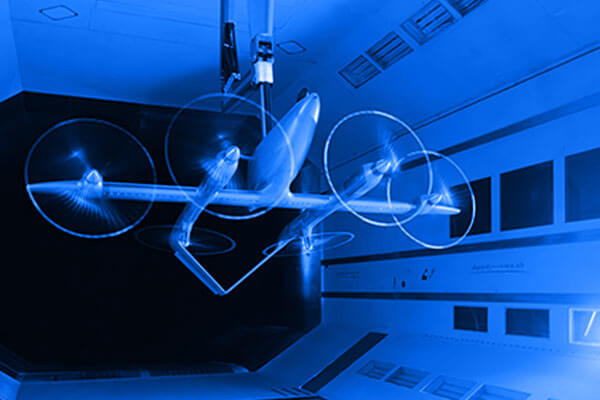Rob Scholl, president and CEO, Textron eAviation, says: "Starting wind tunnel testing is a major milestone for the Nexus, enabling us to calibrate our simulations and validate our design. The Nexus aircraft is designed with a focus on operating economics demanded by customers and meeting the rigorous standards of global safety regulators."
"While eVTOLs have unique configurations in terms of their layout and number of rotors, Textron eAviation is leveraging the extensive experience of programs like the Bell V22 and V280," Scholl said. "The data and insights gained from this will tunnel testing will allow us to further refine our models and designs to design a viable, leading eVTOL aircraft."
The Nexus wind tunnel test is being conducted on a 23% scale model to evaluate the rotors at the full range of conversion angles and power levels, drawing on Textron's decades of test experience from its tilt rotor, turboprop, and jet aircraft product development. The tests also provide immediate information related to tail size, engine power requirements, transition strategies, hover net thrust and aerodynamic drag, clearing the path towards final requirements that meet certification standards.
Textron eAviation comprises the Nexus program, its eVTOL division, and Pipistrel, its Slovenian light sport aircraft manufacturer. The latest model of the Nexus eVTOL is designed to have the potential to serve a range of purposes, including for the passenger transport, cargo, and emergency medical services markets.
For more information, visit: https://e-aviation.com
Media Contact
8020 Communications
Chiara Lawrence / Amber George
eaviationteam@8020comms.com
+44 1483 447380
About Textron eAviation
Headquartered in Wichita, Kansas, Textron eAviation is focused on sustainable flying, backed by Textron's 100 years of expertise and the restless spirit for innovation that is embodied in Textron's Pipistrel, Cessna, Beechcraft and Bell brands.
Taking the lead in Textron's development of sustainably powered flight, Textron eAviation is leveraging the industry-leading product design, certification, manufacturing, and aftermarket solutions from across Textron's businesses coupled with the newly acquired expertise of Pipistrel.
About Pipistrel
In 2020, Pipistrel's Velis Electro became the world's first, and currently only, electric aircraft to receive full type-certification from the European Union Aviation Safety Agency (EASA). This achievement followed a series of electric aircraft introductions since the company began research and development of electric propulsion in 2000. Pipistrel's pioneering work has been recognized through awards from NASA, IDC, and other organizations. The company, which offers a family of gliders and light aircraft with both electric and combustion engines, has delivered more than 2,500 light aircraft worldwide since its founding in 1989 and additionally has both hybrid and electric propulsion models under development. For more information, visit: www.pipistrel-aircraft.com.
About Textron Inc.
Textron Inc. is a multi-industry company that leverages its global network of aircraft, defense, industrial and finance businesses to provide customers with innovative solutions and services. Textron is known around the world for its powerful brands such as Bell, Cessna, Beechcraft, Pipistrel, Jacobsen, Kautex, Lycoming, E-Z-GO, Arctic Cat, and Textron Systems. For more information, visit: www.textron.com.
Certain statements in this press release may project revenues or describe strategies, goals, outlook or other non-historical matters; these forward-looking statements speak only as of the date on which they are made, and we undertake no obligation to update them. These statements are subject to known and unknown risks, uncertainties, and other factors that may cause our actual results to differ materially from those expressed or implied by such forward-looking statements, including, but not limited to, the efficacy of research and development investments to develop new products or unanticipated expenses in connection with the launching of significant new products or programs; the timing of our new product launches or certifications of our new aircraft products; our ability to keep pace with our competitors in the introduction of new products and upgrades with features and technologies desired by our customers.

